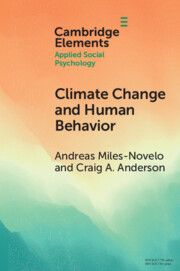Element contents
Climate Change and Human Behavior
Published online by Cambridge University Press: 01 February 2022
Summary
- Type
- Element
- Information
- Online ISBN: 9781108953078Publisher: Cambridge University PressPrint publication: 03 March 2022
References
- 23
- Cited by

